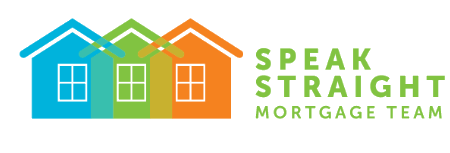Mortgage Rate Comparison: 8/19/2024 vs. 8/26/2024 Welcome to our latest mortgage rate comparison. We are…
Understanding Temporary Rate Buydowns | 3-2-1, 2-1 and 1-1 | What Is A Temporary Rate Buydown?
Understanding Temporary Rate Buydowns: 3-2-1, 2-1, and 1-1 Buydowns
In today’s high-interest rate environment, finding ways to make home ownership more affordable is crucial. One effective strategy is utilizing temporary rate buydowns, such as the 3-2-1, 2-1, and 1-1 buydowns. These buydowns, often funded by seller concessions, offer a way to reduce monthly payments in the initial years of your mortgage. Let’s dive into each type of buydown to understand how they work, their benefits, and real-world applications.
1-1 Buydown
Understanding the Basics:
The 1-1 buydown starts with a standard 30-year fixed loan. For example, with a $500,000 purchase price and a 6.25% interest rate, the monthly payment would be $3603.
What is a 1-1 Buydown?
A 1-1 buydown reduces the interest rate by 1% for the first two years, making the effective interest rate 5.25% instead of 6.25%. This is funded by the seller through concessions, making the purchase more appealing.
Real-World Scenario:
The cost of a 1-1 buydown in this scenario is $7785. This amount is negotiated by the real estate agent and paid into an escrow account by the seller. Monthly payments are supplemented by this account to lower the buyer’s payments. If the buyer refinances before two years, any remaining funds are applied to the loan principal.
Why Use a 1-1 Buydown?
It allows buyers to benefit from lower monthly payments initially, making home ownership more affordable despite higher interest rates.
2-1 Buydown
Basics of a 2-1 Buydown:
Similar to the 1-1 buydown, it starts with a standard 30-year fixed loan. For instance, with a $500,000 purchase price, 6.25% interest rate, and a VA loan, the monthly payment would be approximately $3603.
What is a 2-1 Buydown?
A 2-1 buydown reduces the interest rate by 2% in the first year and 1% in the second year. This is funded by seller concessions, making the initial years of home ownership more manageable.
Real-World Scenario:
The cost of a 2-1 buydown is $11479. In the first year, the interest rate is reduced by 2%, and the seller contributes $632 monthly to lower the buyer’s payments to $2971. In the second year, the rate is reduced by 1%, and the seller contributes $324 monthly.
Benefits and Conditions:
If refinancing occurs before the buy down period ends, remaining funds are applied to the loan principal. Buyers must qualify for the loan based on the original terms, not the reduced payment.
3-2-1 Buydown
Understanding the Basics:
Like the previous buydowns, this starts with a standard 30-year fixed loan with a $500,000 purchase price and a 6.25% interest rate.
What is a 3-2-1 Buydown?
A 3-2-1 buydown reduces the interest rate by 3% in the first year, 2% in the second year, and 1% in the third year. This creates significantly lower initial payments, gradually increasing over the first three years.
Real-World Scenario:
Assume the buydown costs around $17,000. In the first year, the buyer benefits from a 3% reduction, making their monthly payments as if the interest rate was 3.25%. In the second year, the payments are based on a 4.25% rate, and in the third year, a 5.25% rate.
Why Use a 3-2-1 Buydown?
This is particularly beneficial in a high-interest market, providing a cushion for the initial years of home ownership.
Conclusion
Temporary rate buydowns, whether 3-2-1, 2-1, or 1-1, offer valuable strategies for home buyers to reduce their monthly payments in the initial years of a mortgage. These buydowns, funded by seller concessions, make it possible to manage finances more effectively when interest rates are high. For more detailed explanations and examples, refer to the videos linked above. If you have any questions or need personalized advice, feel free to reach out to Speak Straight Mortgage.
Want to see how a temporary buydown can work for you?
Matthew Wentz
NMLS #1852397
Speak Straight Mortgage
Phone: 720-819-4463
Email: matt@speakstraightmortgage.com
Website: www.speakstraightmortgage.com



